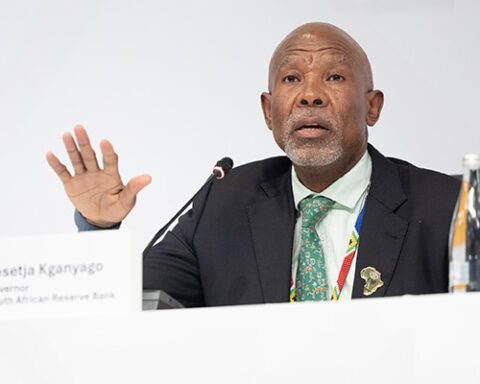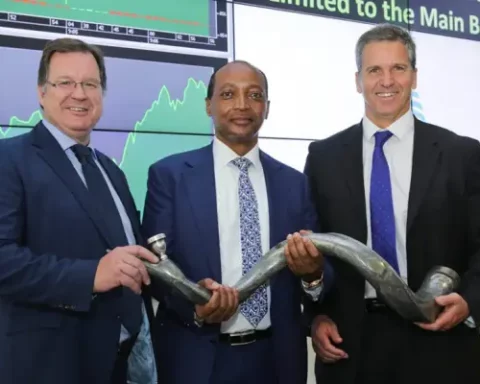Gold has two qualities that make it different from copper, iron ore and lithium. The first is that it’s rustless. It doesn’t degrade over time, so all of the world’s gold is still in existence and theoretically available for sale. This means supply and demand is not purely a matter of mines versus consumers. Second, gold is shiny. Its primary function is not as an input to other products, but as jewellery or a store of value. In this regard, gold has been viewed for millennia as the best store of value available to most people. Being rustless and shiny makes gold nice to have around your finger or hidden away for a rainy day.
On the supply side, gold is tiny – that is, it’s rare to find in the ground, and getting rarer. The supply of new gold has been slowly dropping over recent decades. Unlike metals such as lithium, humans have been scouring for gold for centuries, and the most bountiful deposits have been exhausted. Mine quality has been dropping for a very long time too, which translates into higher and higher mining costs, especially as lower ore grades are being met by higher labour and energy prices, plus increasing environmental expenses. Miners require a higher price to justify their higher costs.
While jewellery demand has been fairly constant, gold has long been the first stop in the wealth accumulation process for much of the world. As the emerging world has been growing a middle class, demand for gold has picked up in recent years. And that’s been boosted by gold’s fourth quality: it is trustless. Gold is not anyone else’s liability, and that becomes more valuable as trust becomes scarcer. Think about the rise of populism, and a re-bifurcation of the world into East versus West; nations and individuals feel less trusting. On top of that, the US has weaponised the dollar system against its adversaries (like Russia), cutting them off from SWIFT payments and freezing their central bank reserves. Unsurprisingly, central banks (for adversaries and non-adversaries alike) are buying gold, and we expect that to continue. Gold’s trustless quality is becoming more valuable as trust in the US dollar system wanes.
So, from a strict supply-demand standpoint, the minimum price hurdle has been steadily increasing, given lower mine quality and rising costs while new demand is outstripping new supply and the urge to sell by current holders. As long as mining costs don’t fall and the drivers of mass demand remain, the price of gold should remain well underpinned.
The other way to look at it is to view gold versus currencies. Many scoff at this perspective, but being trustless, rustless, shiny and tiny makes gold particularly currency-like. Its validity as such has been proven over a long time, with its first official use by the Egyptians in 1500BCE. And it’s the only currency-like asset that has not been devalued through governmental mismanagement.
It’s important to remember that the number of dollars, pounds, euros or rands you see in an account is only worth what others are willing to give you in exchange. Unlike gold, where the supply is essentially fixed, all paper currencies suffer the same frailty – politicians or their appointees control the printing press, and their desire is generally to get re-elected, while their time horizon only extends through their tenure. This makes them inclined to print, spend and give away as much as they are able to get away with. Recently that has been a lot!
Guarding against a debt spiral
On the US government’s own forecasts (using assumptions we consider rosy), federal debt to GDP is set to rise from today’s 100% to 120% and beyond. Essentially the full increase is in mandatory programmes like pensions and health care. With more debt and ongoing deficits, interest expenses creep up. This year, the US will spend more on interest servicing its debt than it spends on its entire military. Higher interest expense makes deficits worse, which means more debt is needed to plug the hole. But with more debt comes higher interest expenses, worse deficits and yet more debt – so it can become a terrible spiral.
The risk exists that this debt spiral finally erupts, with very significant implications for markets and accumulated wealth. In this light, we currently view holding a decent amount of gold exposure as prudent.
The remaining question is what would make us sellers, and here gold is not so different from the other holdings in our multi-asset portfolios. Every security is in a continuous competition for capital. In our view, the most likely cause for us to sell gold will be to free up capital for better opportunities – if equities decline and gold holds up better, for instance, fulfilling its traditional diversifying role. A swing in the pendulum towards increased fiscal responsibility or reduced geopolitical conflict would also swing our views and could make big swathes of the equity and fixed income universe more compelling. While we hope for that improvement, it looks unlikely to us today. Gold may just prove to shine brightest when the outlook appears to be dimmest elsewhere.
Alec Cutler joined Orbis in 2004. He is a member of the Bermuda-based multi-asset investment team and is responsible for the Orbis Global Balanced Strategy. He holds a bachelor of science (honours) degree in naval architecture from the US Naval Academy and a master of business administration from The Wharton School of the University of Pennsylvania. He is also a CFA charterholder.









